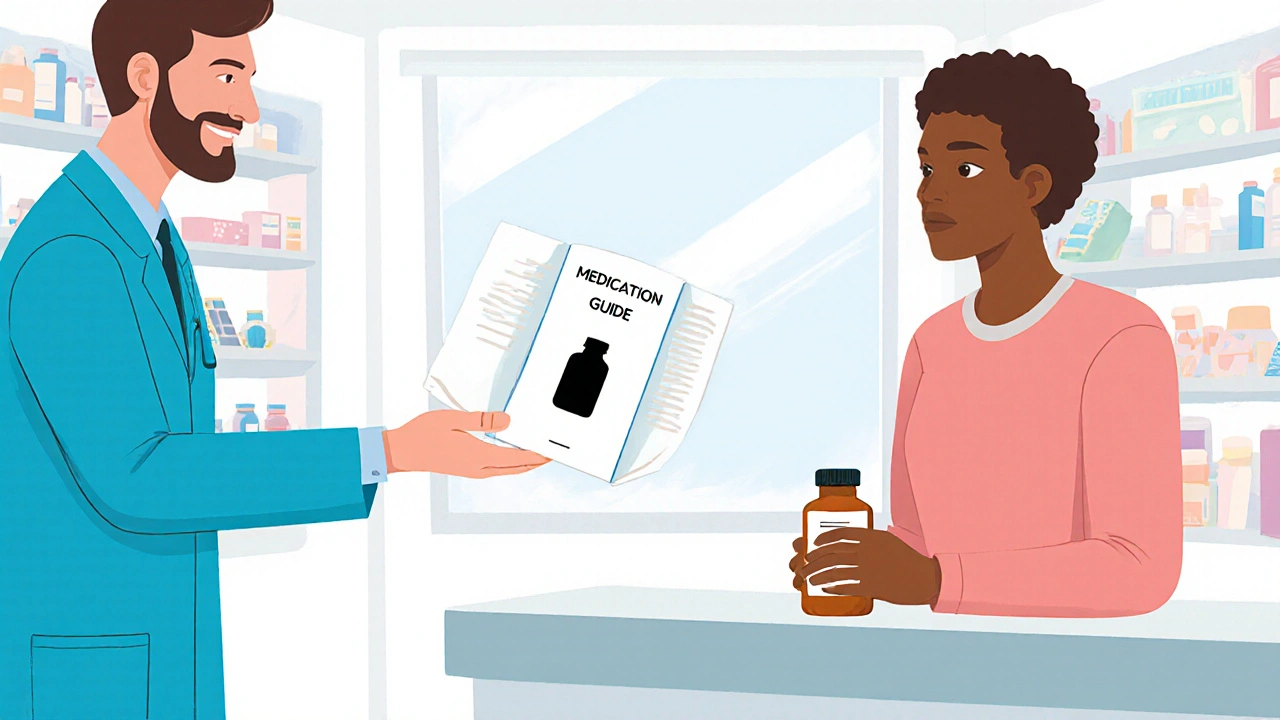
Medication Guides Explained: Why They’re Critical for Patient Safety
Learn what Medication Guides are, why the FDA mandates them, and how they protect patients from serious drug risks. Get clear steps to use these guides effectively.
When you pick up a prescription or grab an over-the-counter pill, the FDA, the U.S. Food and Drug Administration, the federal agency responsible for approving and monitoring drugs, medical devices, and food safety. Also known as the U.S. Food and Drug Administration, it’s the gatekeeper between a lab discovery and your medicine cabinet. It doesn’t just say yes or no—it sets the rules for how drugs are tested, how companies label them, and even how pharmacies sell them.
The FDA doesn’t just approve new drugs. It watches them after they hit the market. That’s how we found out about rare but serious side effects from drugs like moxifloxacin or why duloxetine warnings get updated years after launch. It’s also why some OTC sleep aids carry bold labels about drowsiness or why creatine supplements don’t need FDA approval but still have to follow safety rules. The agency doesn’t regulate supplements the same way it does prescription drugs, and that gap trips up a lot of people.
Behind every drug you read about here—from Tadalista Super Active to Baclosign to Adalat—is an FDA review process. Some drugs got fast-tracked. Others sat on shelves for years while the FDA demanded more data. That’s why you see so many comparisons between brand names and generics: the FDA says they’re equivalent, but real-world results vary. And when it comes to generic metformin or cheap Celebrex bought online, the FDA warns against unapproved sellers. Not every pharmacy selling meds online follows U.S. standards, and the FDA doesn’t have power overseas.
The FDA also tracks drug interactions, recalls, and safety alerts. That’s why you’ll see posts here about lipoprotein(a) testing or swimmer’s ear treatments—because the FDA approves the tests and the ear drops used to treat them. Even beauty trends like Bimatoprost for eyelash growth started as a glaucoma drug the FDA approved, then got reclassified for cosmetic use. That’s the kind of twist the FDA enables.
What you won’t find in FDA documents? Every patient’s personal experience. That’s where the posts below come in. They’re real stories from people using these drugs, noticing side effects, comparing prices, and asking: Does this actually work? Is it safe? Why did my doctor pick this over that? The FDA sets the baseline. These articles show what happens after the approval stamp.

Learn what Medication Guides are, why the FDA mandates them, and how they protect patients from serious drug risks. Get clear steps to use these guides effectively.